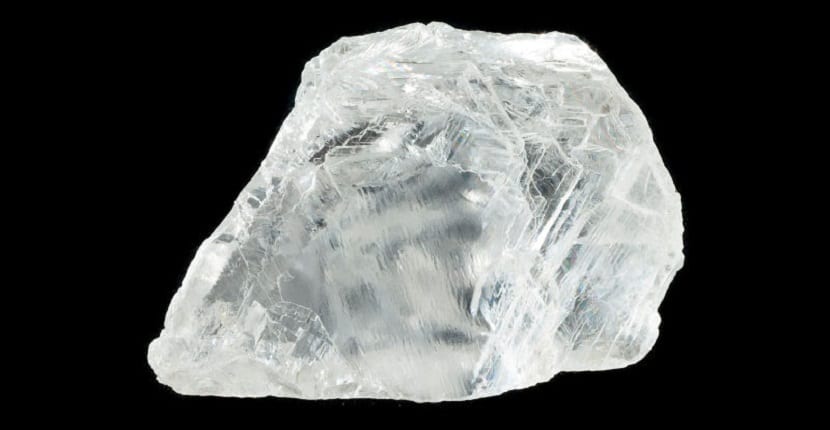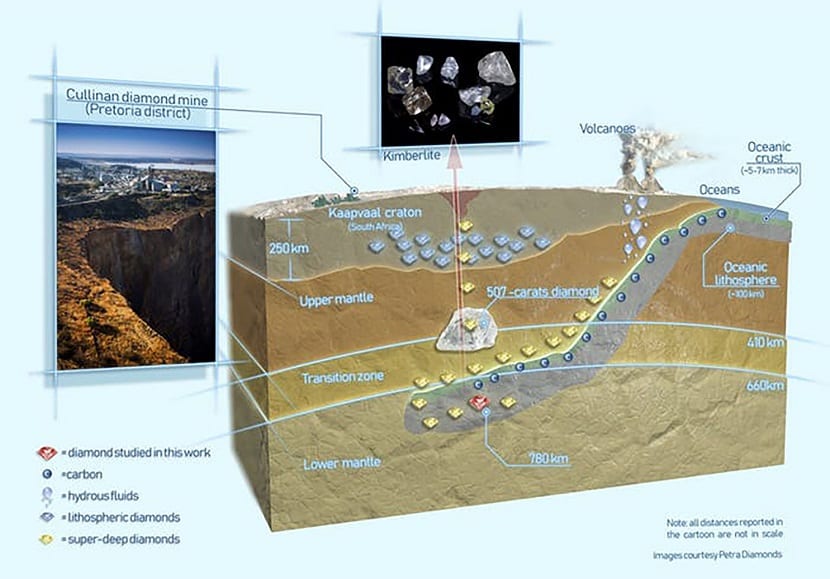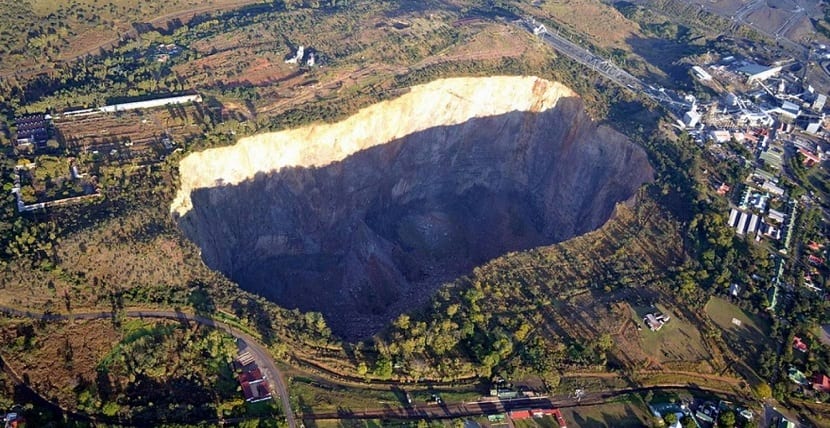
Many are the occasions in which theory tends to go far ahead of practice. This is precisely one of the few conclusions that we can reach in the face of news like the one that brings us together today in this blog. To put you in context a bit, tell you that in La Tiera there are many minerals that, for one reason or another and despite the fact that they are very abundant, we have never seen them with our eyes.
As you can see, we are talking about something that may seem tremendously strange, a material that is very abundant on Earth but that we have never seen. Although it is difficult to 'to digest'. The truth is that this is precisely what happens with the calcium silicate perovskite, CaSiO3, same as today is the fourth most abundant mineral on this our planet and that curiously and, as I said before, we had never before had the opportunity to contemplate it with our eyes.

They find a diamond that contains one of the most abundant materials on Earth
As you may be assuming, there is a trick to all this and it is nothing more than the simple fact that calcium silicate perovskite is found deep within the Earth, as well as the fact that once it is extracted and rises towards the surface, at a depth of 650 kilometers, it becomes unstable. The only way to ensure that this material has been able to rise to the surface and thus be able to contemplate it is that a sample has been found inside a small diamond chip.
This small sample, or rather the diamond, was found, according to the reports that have been revealed, less than a kilometer away from the Earth's surface in the Cullinan diamond mine, located in South Africa. As the geochemist has commented Graham pearson about:
No one has managed to keep this mineral stable on the surface of the Earth. The only possible way to preserve it on the surface is when it is trapped in an inflexible container such as a diamond.

The lower mantle of the Earth is made up of 90% calcium silicate perovskite
To get an idea, you just need to do a little internet search to find out why calcium silicate perovskite is one of the most abundant materials on the planet, according to scientists. this material literally makes up more than 90% of the Earth's lower mantle. Curiously, and despite the fact that, as you can see, the material was baptized at the time and its composition is known, the truth is that no scientists had been able to see it with their own eyes until now, at which time, finally, there is palpable evidence of the existence of this mineral.
At this moment, as you are surely imagining, there are many scientists and researchers who have already contacted the custodians of this material to get them to give them the license that allows them to be able to study them in more detail and thus being able to know why, once it rises to the surface, it becomes so unstable to the point that it disappears, something that does not happen with many other materials such as, for example, diamonds.

The diamond found, in turn, is one of the strangest that has been mined to date
Another very interesting detail about this mineral is found precisely in the container that made its discovery possible. I'm talking about the diamond itself, which is only 0 millimeters wide and which, according to scientists, is extremely rare since, unlike all diamonds that are born at a distance of between 031 and 150 kilometers from the Earth's surface, this was created at a depth of about 700 kilometers.
To give you an idea, at that depth the pressure is about 240.000 times the pressure that exists at sea level. This enormous pressure is precisely responsible for this diamond, in its creation, trapping calcium silicate perovskite inside. According Graham pearson:
Diamonds are truly unique ways to see what is on Earth. And the specific composition of the perovskite inclusion in that particular diamond clearly indicates the recycling of the oceanic crust in the lower mantle of the Earth. It provides fundamental proof of what happens to the fate of oceanic plates as they descend deep into the Earth.